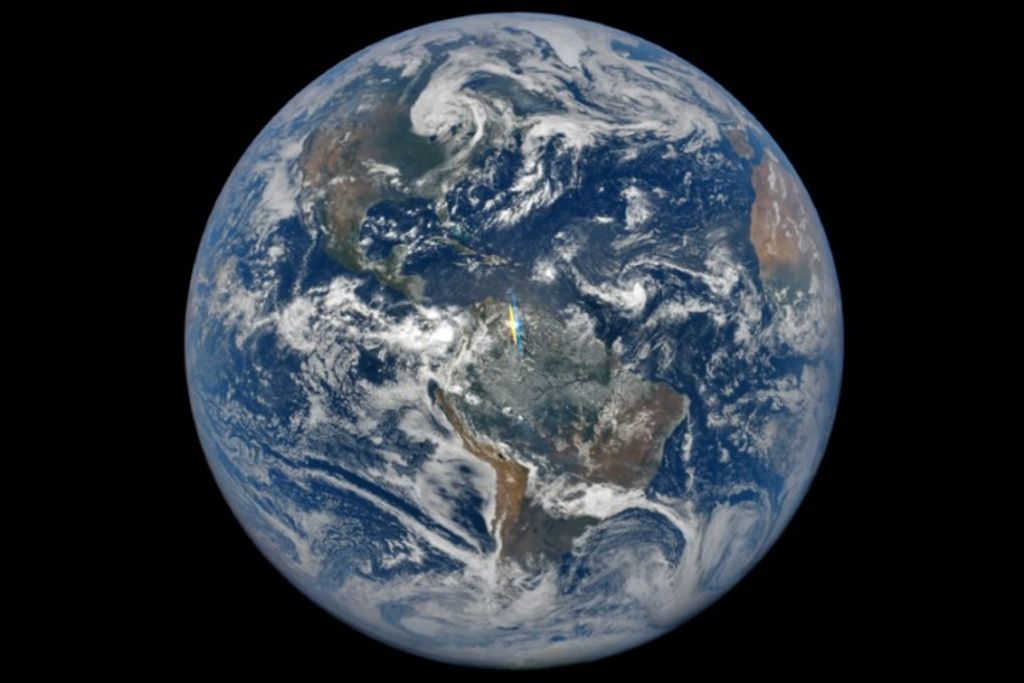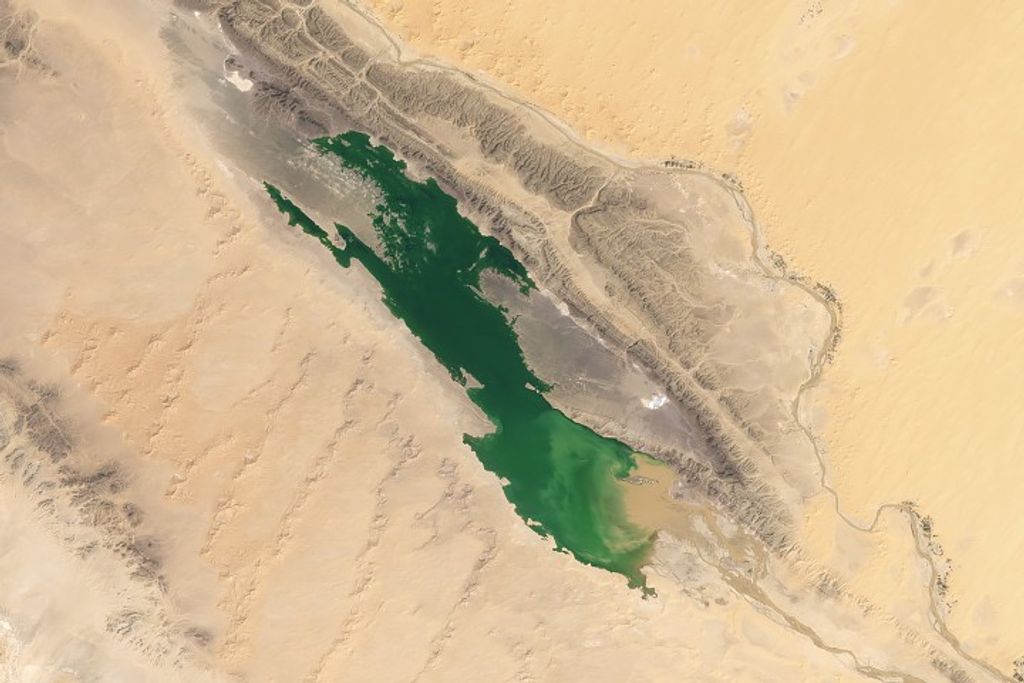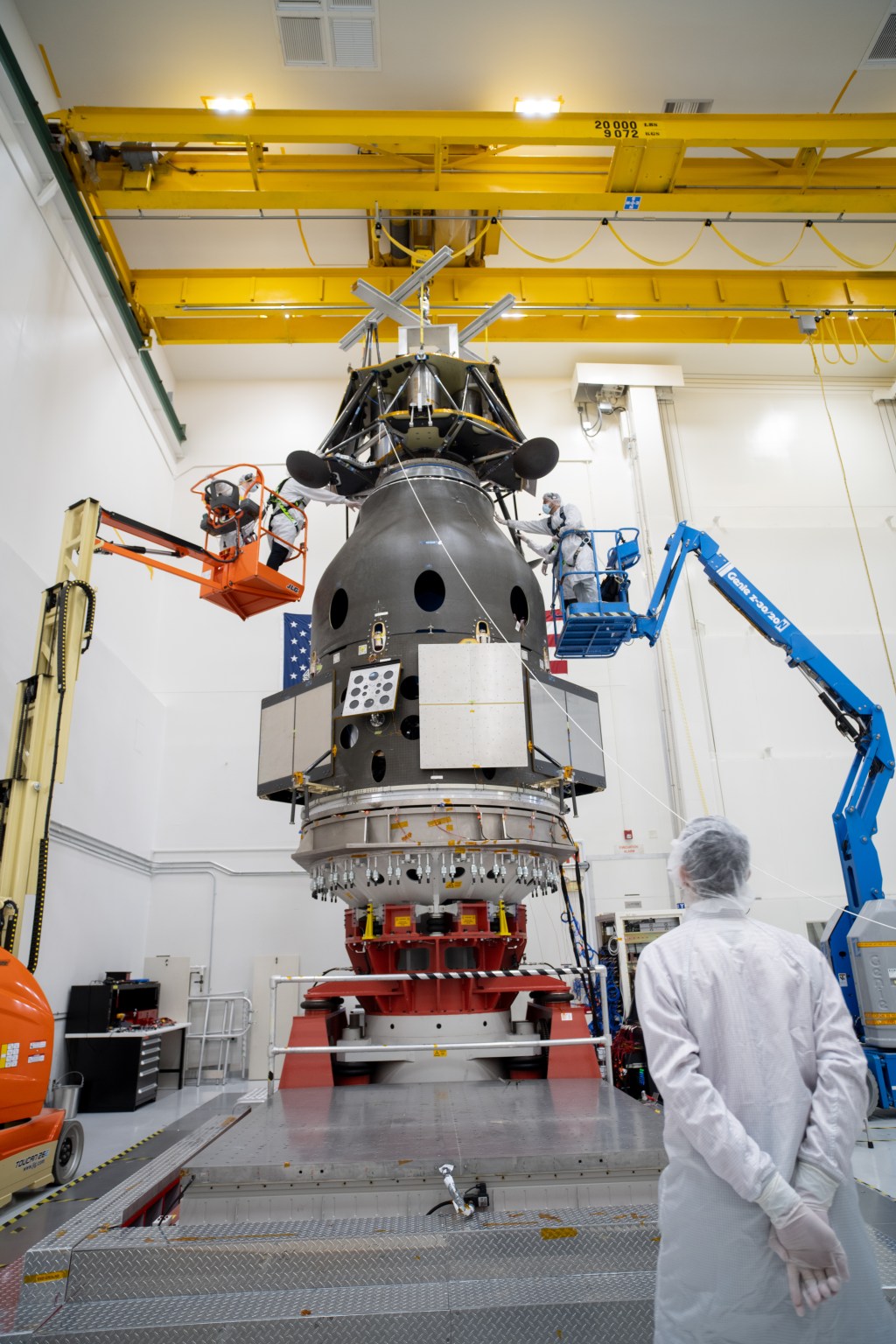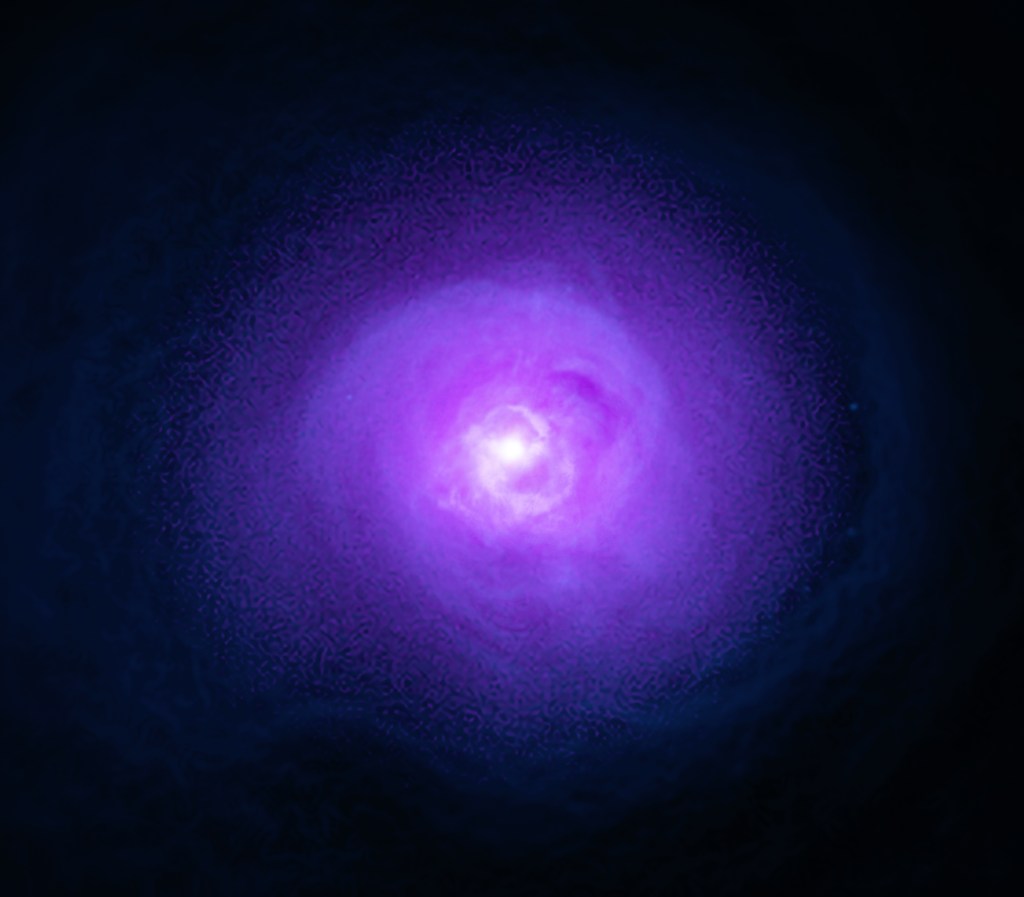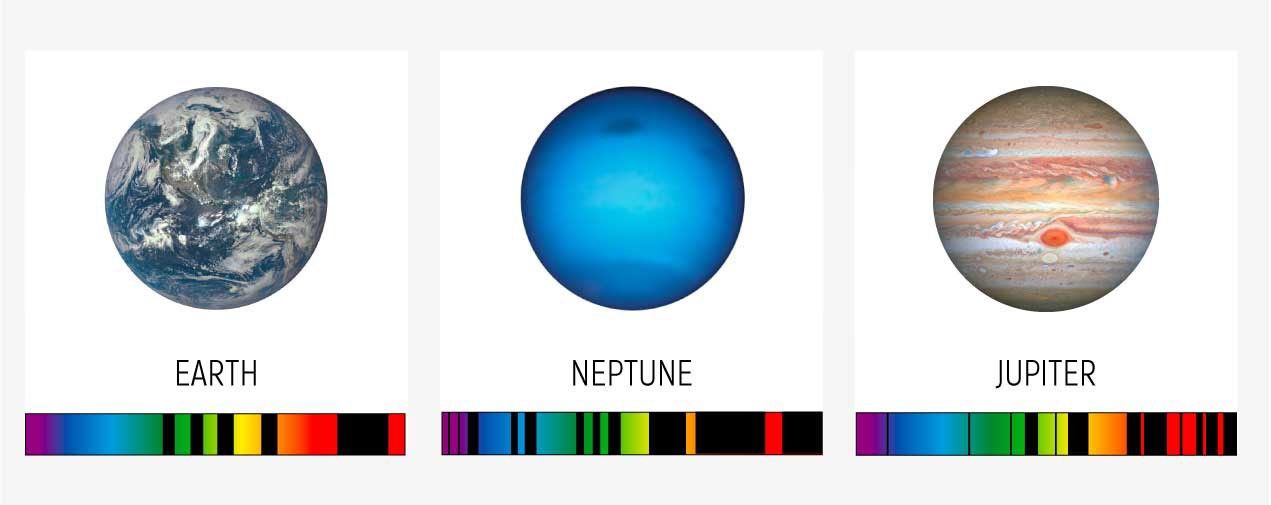Contents
- Webb will deliver both high-resolution data and images in a broader range of infrared light to improve our studies of exoplanets.
- Wait, What Are Exoplanets?
- Webb will deliver details about exoplanets that no other telescope can.
- Webb will deliver details about exoplanets that no other telescope can.
- How can Webb analyze exoplanets’ atmospheres?
- How can Webb’s data be transformed into models or “maps” of exoplanets?
- Will Webb take any images of exoplanets?
Webb will deliver both high-resolution data and images in a broader range of infrared light to improve our studies of exoplanets.
NASA’s James Webb Space Telescope will primarily use its spectrographs–specialized instruments that capture and spread out light like a rainbow–to study exoplanets. By analyzing this data, known as spectra, researchers will be able to measure exoplanets’ compositions and chemistries. Spectra will help refine what we know about any exoplanet Webb observes, including massive gas giants, mid-sized ice giants, and smaller rocky exoplanets (some of which could be similar to Earth). In a few cases, Webb will deliver images of exoplanets to reveal more about them.
Wait, What Are Exoplanets?
Planets outside our solar system are known as exoplanets.
Until the 1990s, we didn’t have any conclusive evidence of planets beyond our own solar system. Once the first few discoveries were made and confirmed, the field exploded. More than 30 years later, researchers have confirmed over 4,000 exoplanets and identified thousands more candidates. (Fun fact: Exoplanet is a term that is derived from the longer phrase “extrasolar planet.”)
Astronomers initially assumed that most planetary systems are like our own, with several planets orbiting a stable star–smaller ones on the inside and larger ones farther out. We now know that those parameters are far too limiting. Exoplanets exist in a range of sizes, vary greatly in terms of how distant they are from their star, and each system is made up of varying types of exoplanets.
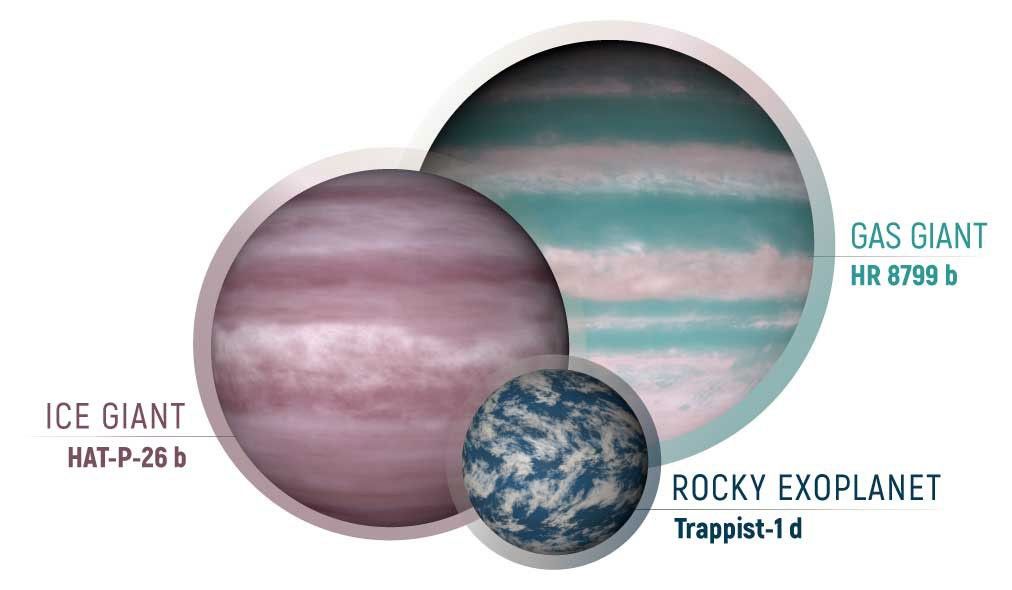
One of the first exoplanets discovered was a gas giant orbiting the Sun-like star 51 Pegasi, but that whips around its star in only four days. Other oddball examples include an exoplanet that orbits two stars; five exoplanets that are part of a compact, but stable system with none that exceed Mercury’s orbit (in other words, they are very close to their star); and exoplanets that orbit their stars in mere hours and are tidally locked (the same side of the planet forever blisters under the heat of its sun).
In addition to the long lists of discoveries made in part by NASA’s Spitzer Space Telescope, NASA’s Hubble Space Telescope, and NASA’s Transiting Exoplanet Survey Satellite (TESS), researchers in this field hope to make significant strides with Webb. Researchers are especially interested in exoplanets that are located far enough from their stars to allow the presence of liquid water, which is known as the habitable zone. And although it is easier to detect larger gas giant exoplanets that are like Jupiter, we really want to know if there are other Earth-like planets out there. Webb will help us seek definitive evidence.
Webb will deliver details about exoplanets that no other telescope can.
From its position in space–and with its huge mirrors–Webb will be able to capture longer infrared wavelengths of light in high resolution for the first time.
Earth’s atmosphere blocks certain types of light, including most infrared light. Although this filtration system is essential for life on Earth, it does limit what we can observe from the ground to a smaller band of near-infrared wavelengths. This why Webb’s position in space is critical: It will be able to observe near-infrared light through the mid-infrared light, where more details about exoplanets are available for discovery.
Webb will deliver details about exoplanets that no other telescope can.
From its position in space–and with its huge mirrors–Webb will be able to capture longer infrared wavelengths of light in high resolution for the first time.
Earth’s atmosphere blocks certain types of light, including most infrared light. Although this filtration system is essential for life on Earth, it does limit what we can observe from the ground to a smaller band of near-infrared wavelengths. This why Webb’s position in space is critical: It will be able to observe near-infrared light through the mid-infrared light, where more details about exoplanets are available for discovery.
We’ve previously launched infrared telescopes into space, like Spitzer and ESA’s Herschel Space Observatory, but neither had large enough mirrors or instruments as advanced as Webb’s to allow them to obtain high-resolution data that are required to very distinctly measure which elements are present in an exoplanet’s atmosphere. This makes a lot of sense: These telescopes paved the way for Webb, allowing scientists to design more advanced instruments that deliver far more–and far more precise–data. When it comes to exoplanets, there’s still a great deal we don’t yet know and so there is much more to learn with Webb.
How can Webb analyze exoplanets’ atmospheres?
By using a precise method of subtraction, known as transmission spectroscopy, researchers can measure the contents of an exoplanet’s atmosphere.
Measuring a planet’s atmosphere from hundreds or thousands of light-years away is not as daunting as it may sound, though it certainly requires specialized instruments and rigorous techniques. One method is known as transmission spectroscopy. Here’s how it works: Webb will first observe the star itself to obtain its spectrum. Next, Webb will wait to until the exoplanet passes in front of its star and then measure another spectrum. At this point, the exoplanet will be backlit, which means the light of the star filters through the planet’s atmosphere toward Webb. The planet’s atmosphere will absorb some of that starlight, which will appear as dips in the spectrum.
When researchers subtract the spectrum of the star from the combined spectrum of the star and the exoplanet, they are able to isolate which light was absorbed when it passed through the exoplanet’s atmosphere. Next, they will compare the light-absorption dips with extensive references that detail the light absorption of every molecule we’ve witnessed on Earth to determine which molecules are present in the exoplanet’s atmosphere.
In its first year, Webb will observe three exoplanets in the TRAPPIST-1 system using transmission spectroscopy. The goal of these observations is to make the first detailed near-infrared study of the atmosphere of a habitable-zone planet. (Learn much more about Webb’s upcoming research about the exoplanets in this system.)
How can Webb’s data be transformed into models or “maps” of exoplanets?
Thermal observations will provide more information about exoplanets at each stage of their orbit.
Researchers observing with Webb will also employ a technique known as a phase curve (or a weather map) by observing exoplanets at different points within their orbits (known as phases). This technique is only practical for the hottest worlds with the shortest orbits (think hours or days, not hundreds of days), which means the exoplanets are very close to their host stars (much closer, for example, than Mercury is to the Sun). Their tight orbits mean they become tidally locked: They always show the same face to the star. (Just as the Moon does to Earth.) Since the side facing the star is far hotter than the side facing away – we can measure these drastic temperature differences.

By observing the planet at various times, astronomers can build up a “map” of the atmospheric temperature as a function of longitude. This technique was pioneered by Spitzer, which made the first weather map of an exoplanet in 2007. And by combining the planet’s heat emission map with other spectroscopic data, astronomers can create a 3D model of its atmosphere.
For example, consider the “hot Jupiter” known as WASP-43b, which lies 260 light-years away. Researchers have previously sampled its atmosphere with Hubble and Spitzer, but Webb will reveal these variations in significantly greater detail, allowing us to understand the physical processes that are responsible for its composition.
Will Webb take any images of exoplanets?
Yes! The telescope will use an instrument known as a coronagraph to block a star’s light to observe the planets that orbit it.
In a few cases, scientists have captured pictures of exoplanets by using instruments called coronagraphs. These devices block 99.99999999 percent of the glare of the star itself (like an artificial eclipse), but not the areas immediately around it–where exoplanets may be orbiting. However, finding exoplanets with this technique has proven to be very difficult. Most of the planets detected to date are roughly 10,000 to 1 million times fainter than their host star. But there’s no question that there are exoplanets that are far fainter than that. Webb will be able to spot planets that are over 10 million times fainter than their host stars. By using Webb’s coronagraphs, scientists will be able to view exoplanets at infrared wavelengths they’ve never seen them in before.
Whether it’s with transmission spectroscopy, phase curves, or coronagraphs, Webb will be able to deliver new “views” of exoplanets hundreds of light-years away, which will allow us to explore the universe like never before.








